Healthcare operations depend on information from clinical notes, diagnostic images, and claims summaries. With so much unstructured data, managing it all can be tough. That’s why generative AI is a big game-changer for AI in Healthcare.
Generative AI uses deep learning algorithms and natural language processing to read, analyse, and understand large datasets. It brings together information from different sources and helps doctors and teams make quick, smart decisions.
When used effectively, generative AI boosts operational efficiency, improves patient care, simplifies administrative tasks, and encourages healthcare innovation. This means hospitals can save time and focus more on their patients.
As AI-driven healthcare grows, more hospitals are using machine learning to handle unstructured data better. With strong data analysis and data interpretation, they can work faster and deliver better results.
Because of these benefits, Gen AI adoption is increasing quickly. Healthcare technology is moving toward a future that’s more automated, accurate, and patient-focused. In short, generative AI is helping AI in Healthcare turn data into action and create a more intelligent, more efficient system for everyone.
This technology gives doctors useful insights, handles routine tasks, and keeps patients more involved. AI lets hospitals work faster and more accurately, giving patients better care.
Definition and Overview of Generative AI in Healthcare
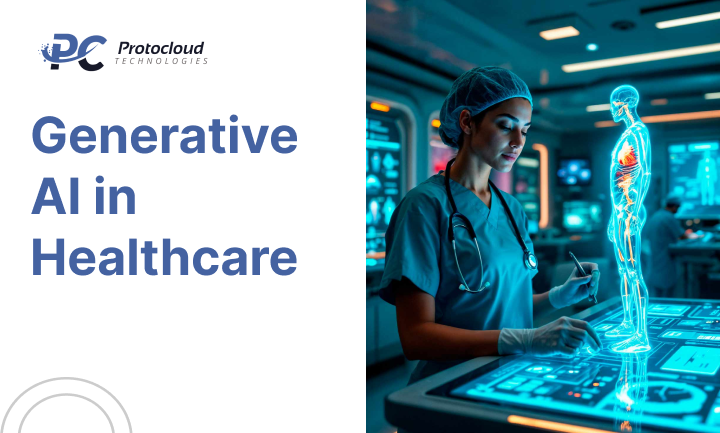
Generative AI uses machine learning to create realistic medical data. This data helps train AI systems, test treatments safely, and provide doctors with tailored insights.
In simple terms, AI lets healthcare workers test treatments safely without using real patient data. This helps them work faster and protect privacy.
Benefits of Generative AI in Healthcare

Generative AI has many benefits in healthcare. It improves patient outcomes, makes hospitals more efficient, and lowers costs. AI helps hospitals give better care and create smarter systems for patients and doctors.
1. Improved Patient Outcomes
Generative AI helps doctors diagnose patients faster and more accurately. It analyzes lots of medical data and finds patterns humans might miss. Using this insight, doctors can create custom treatment plans, improving recovery and outcomes.
This use of AI-powered healthcare ensures that patients receive care tailored to their specific health needs, leading to healthier lives and faster treatments.
2. Increased Efficiency
One major benefit of generative AI is automation. It handles repetitive tasks such as data entry, scheduling, and report creation. This frees up doctors and nurses to focus on patients.
The result? Better healthcare efficiency, smoother workflows, and more attention on delivering quality medical services.
3. Enhanced Patient Engagement
Generative AI also boosts patient engagement. It gives each patient custom insights and tips to stay informed about their health. This technology encourages patients to take an active role in their treatment process, improving trust and communication between them and their doctors.
4. Reduced Healthcare Costs
By optimizing clinical workflows, AI in healthcare minimizes unnecessary tests and medical procedures. It finds the best ways to diagnose and treat patients, saving time and money.
Lowering healthcare costs doesn’t just benefit hospitals—it also makes healthcare more accessible to everyone.
Top 10 Use Cases of Generative AI in Healthcare
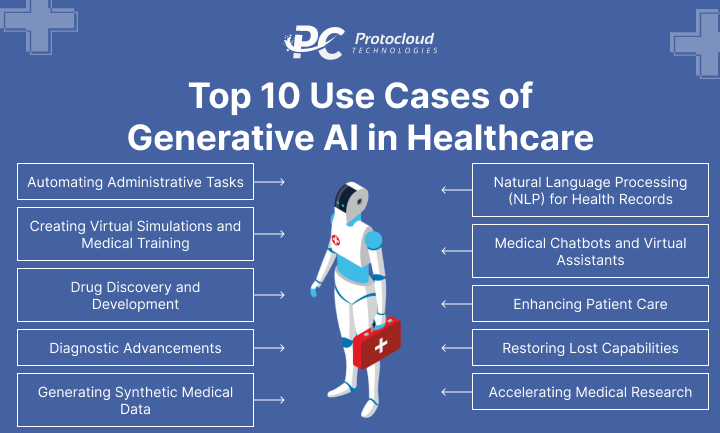
Generative AI uses machine learning and data analysis to change healthcare. It does more than improve efficiency — it solves major challenges. From automating admin tasks to speeding up drug discovery, AI is helping medical professionals work, learn, and innovate.
Below are ten key ways generative AI is making a significant impact in healthcare.
1. Automating Administrative Tasks
Hospital staff spend a lot of time on paperwork and scheduling. They often struggle to book appointments, manage records, and handle billing. These repetitive jobs slow down work and increase errors.
Many doctors also feel overworked. AI tools can reduce that stress by handling routine tasks automatically. Hospitals spend up to 30% of their budget on admin work, and AI can help lower that cost.
How AI improves administrative work:
- Automated scheduling: Uses patient history and doctor availability to book appointments.
- Smart data extraction: Fills out forms automatically to avoid manual errors.
- AI chatbots: Manage patient questions, reminders, and follow-ups.
- Medical transcription: Turns voice notes into digital records.
- Billing automation: Speeds up claim processing and payments.
- Claim review automation: Checks insurance claims and predicts possible rejections.
These tools save time and money, allowing healthcare workers to focus more on patient care.
2. Creating Virtual Simulations and Medical Training
Generative AI is transforming medical training with realistic virtual simulations. It helps doctors and students practice complex procedures in a safe, risk-free space.
Unlike traditional training that depends on physical resources, AI-based learning allows repeated practice and quick feedback. This makes learning more effective and builds confidence.
Examples include:.
- Virtual surgical simulations: Let surgeons practice before real operations.
- Patient case simulations: Create realistic scenarios for diagnosis training.
- 3D anatomy models: Help students understand body structures and surgeries.
With AI, medical education becomes more engaging, practical, and efficient.
3. Drug Discovery and Development
Drug discovery is slow and expensive. Creating new medicines can take many years and cost billions. AI makes this process faster by designing new drug molecules and simulating clinical trials digitally.
AI speeds up drug development by:
- Designing new compounds more accurately.
- Predicting drug interactions to ensure safety.
- Identifying the best trial candidates.
- Reusing existing drugs for new treatments.
By reducing failed experiments, AI saves money and brings treatments to patients sooner.
4. Diagnostic Advancements
High-quality scans are key to accurate diagnosis. Generative AI improves MRIs, CT scans, and X-rays, making images more transparent and easier to read.
This helps doctors detect diseases like cancer, Alzheimer’s, or diabetes-related conditions earlier and more accurately.
AI can also create synthetic medical images to fill data gaps. These realistic datasets train AI models to perform better across different patient groups.
While AI increases accuracy and speed, it supports — not replaces — human expertise.
5. Generating Synthetic Medical Data
Access to real medical data is often limited because of privacy rules. Generative AI solves this by creating synthetic data that looks real but protects patient identity.
This lets researchers train AI safely without using real patient information.
Benefits include:
- Realistic datasets that cover different conditions and patient types.
- Data privacy and compliance with protection laws.
- Custom datasets for specific research.
- A safe space to test algorithms before real-world use.
Synthetic data helps speed up research while keeping patient details private.
6. Natural Language Processing (NLP) for Health Records
Doctors deal with vast amounts of unstructured data — notes, prescriptions, and reports. NLP, a branch of AI, helps them handle this information faster and with fewer errors.
How NLP helps:
- Extracts key points from complex health records.
- Automates documentation, saving doctors’ time.
- Improves billing accuracy.
- Reduces mistakes and prevents financial losses.
NLP makes record management smoother and improves communication across departments.
7. Medical Chatbots and Virtual Assistants
AI-powered chatbots are changing how patients interact with hospitals. They help with appointment bookings, reminders, and medication management — without waiting for staff.
When connected to hospital systems, these assistants can check patient history, order lab tests, and send follow-ups.
Benefits:
- Reduces doctor and nurse workload.
- Makes healthcare more accessible.
- Gives quick, accurate answers to common questions.
This improves patient satisfaction and ensures better communication.
8. Enhancing Patient Care
AI is helping doctors provide more personalized care. It studies each patient’s medical history and lifestyle to design custom treatment plans.
For example, AI can analyze a tumor’s DNA to find genetic changes causing cancer and suggest targeted treatments.
By studying data from thousands of patients, AI predicts treatment outcomes more accurately — helping doctors make better decisions and improving recovery rates.
9. Restoring Lost Capabilities
One of the most inspiring uses of AI is helping people regain lost abilities like movement or speech. AI can read brain and nerve signals and turn them into actions or words.
How AI supports rehabilitation:
- Creates personalized recovery plans for patients with paralysis.
- Finds high-risk patients early by spotting data trends.
- Identifies new therapy options through large-scale data analysis.
This mix of AI and rehabilitation opens new doors for patient recovery.
10. Accelerating Medical Research
Generative AI is speeding up medical research. It can read thousands of studies in minutes to find patterns, test ideas, and suggest new drug targets.
Researchers use it to identify disease-related genes and proteins, leading to faster, more accurate discoveries.
With AI-driven insights, innovation is happening quicker than ever. From drug development to disease prevention, AI is shaping the next era of medical science.
Real-World Examples of Generative AI in the Healthcare Sector
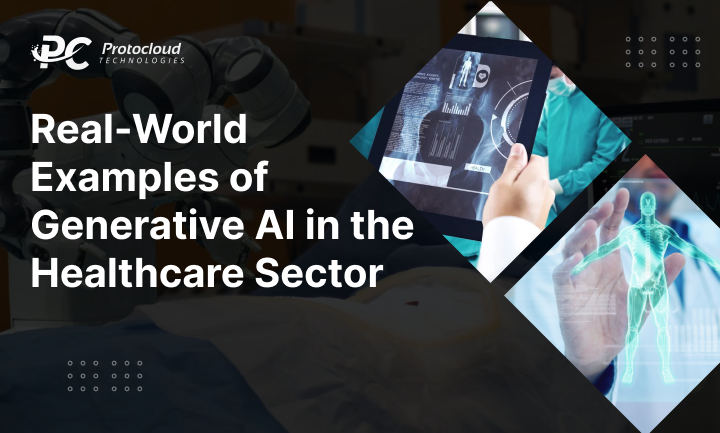
Generative AI in healthcare is changing how doctors, researchers, and hospitals work. It’s helping improve care, speed up processes, and make better decisions. Below are real-world examples of how AI-driven healthcare tools are solving problems in healthcare.
1. Mass General Brigham
During the post-COVID healthcare period, Mass General Brigham faced a flood of patient calls. They started a nurse-staffed hotline to answer questions, but wait times grew to over 30 minutes.
To fix this, they used a CDC screening chatbot from the Providence Health System. They built an AI-powered voice system that answered patient questions and guided them to the proper care.
This patient hotline automation handled more than 40,000 patients in the first week. It saved time and reduced stress for both patients and staff.
Now, almost one in ten doctors at Mass General Brigham use AI note-taking tools that listen during appointments and upload notes to electronic health records (EHRs). Dr Amy Wheeler shared that the system is “incredibly accurate,” allowing her to focus more on patients.
This shows how AI in healthcare can improve patient engagement, simplify EHR automation, and help hospitals act quickly during a healthcare crisis.
2. Recursion Pharmaceuticals and AI Startups
Recursion Pharmaceuticals is using machine learning in healthcare to speed up drug development. The company recently bought two AI startups, including Valence AI, for 88 million USD.
Valence AI is known for its generative AI in drug design. It helps scientists create and test new molecules faster. Recursion uses its massive data—over 23 petabytes and 3 trillion gene-compound relationships—on NVIDIA’s DGX Cloud to train new models.
They also use BioNeMo, NVIDIA’s generative AI platform for drug discovery. This helps build more innovative models for biopharma technology and molecular analysis.
By using AI, Recursion can design new drugs without the long, expensive lab testing required for traditional drug development. It’s one of the best real-world examples of how healthcare innovation and AI startups are improving the future of medicine.
3. Vocable App
Vocable is an AAC communication app that helps people with speech difficulties. It works on iPhones and iPads to make communication easier and more natural.
Using ChatGPT-powered AI, Vocable creates smooth, human-like conversations. For Apple Vision Pro users, it also includes eye tracking and spatial computing, making it faster and more intuitive.
For 17.9 million Americans with speech problems, the Vocable app is a cheaper and smarter alternative to $15,000 AAC devices. It supports people with ALS, MS, autism, and even patients who are intubated in hospitals.
This is an excellent example of AI in the healthcare sector, improving access to healthcare and helping real people in everyday life.
How Generative AI Works in Healthcare
Generative AI learns from lots of data using advanced algorithms. It can create new content similar to the original input. In healthcare, this helps improve patient care and hospital efficiency.
Advanced AI models, like large language models and foundation models, train on electronic health records (EHRs), medical images, and other clinical data. They study patient data and give insights to help doctors make better decisions.
Generative AI in healthcare can:
- Boost diagnostic accuracy by examining scans, lab results, and records.
- Simplify administrative tasks, lowering the administrative burden on medical professionals.
- Automate clinical documentation, improving healthcare delivery and saving staff time.
- Support drug development and clinical trials by analyzing proprietary data quickly.
To succeed, hospitals must follow privacy laws and ensure data availability. This builds consumer trust and supports wide use across the healthcare sector.
With AI in healthcare, clinics and hospitals can provide faster, safer, and more competent care using generative AI algorithms.
Potential Challenges of Generative AI in Healthcare
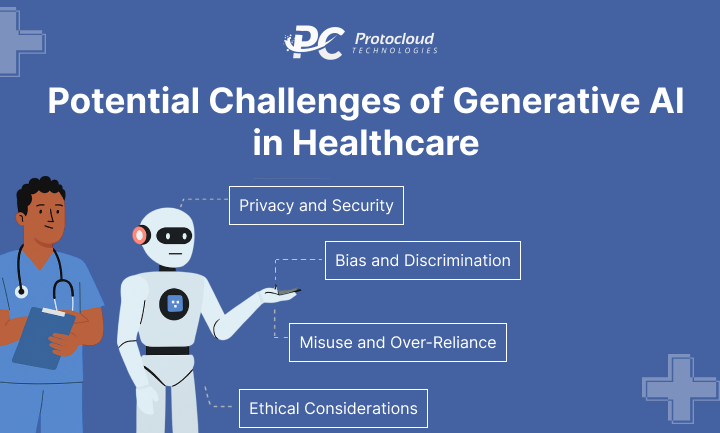
AI has significant benefits in healthcare, but also a few risks we must handle carefully. Understanding these is key to using AI safely.
Privacy and Security
Patient privacy is critical. Using generative AI in healthcare raises concerns about sensitive medical data. AI systems can be misused or accessed without permission. Hospitals must protect patient data to keep people’s trust.
Bias and Discrimination
AI can show bias if it’s trained on limited or uneven data. This can cause inaccurate medical diagnoses or treatment plans. Underprivileged groups, such as women or people races, may be affected. Diverse data and monitoring are essential to reduce bias.
Misuse and Over-Reliance
Improper use of generative AI can lead to wrong medical decisions. If doctors rely too much on AI, they might stop thinking independently. AI should support, not replace, human judgment.
Ethical Considerations
AI could change how many people work in healthcare. Using generative AI in healthcare raises ethical questions. Organizations must consider the effects on employment and ensure responsible use
The Future of Generative AI in Healthcare

The future of generative AI in healthcare is promising. As technology advances, adoption will grow.
- More innovative algorithms: AI will get better at finding patterns and trends in health data. This helps create more accurate diagnoses and personalized treatment plans.
- Wider applications: AI will be used in more healthcare settings, including predictive modeling for disease outbreaks and drug discovery.
- Better integration: AI will connect with medical images and wearables to offer more personalized care.
- More collaboration: Healthcare providers, researchers, and technology companies will work together to implement generative AI algorithms effectively.
If we fix privacy and fairness issues, AI can truly make healthcare better for everyone. The future promises smarter, safer, and more personalized healthcare for everyone.

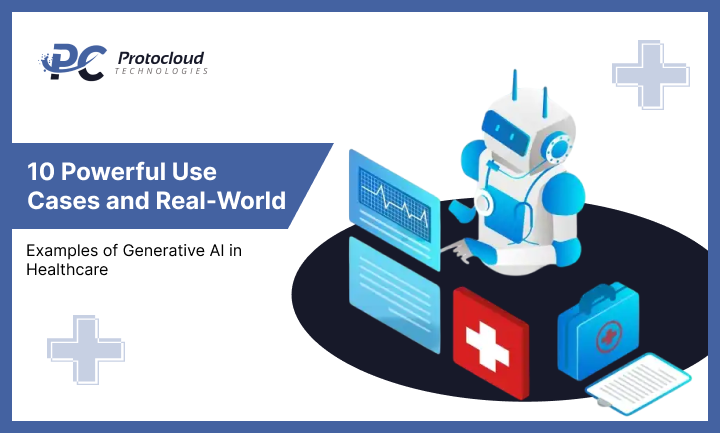

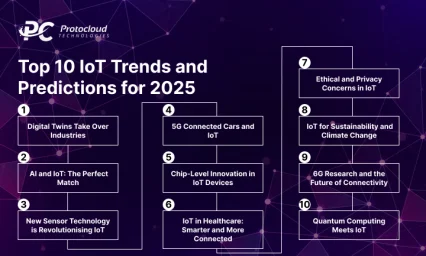


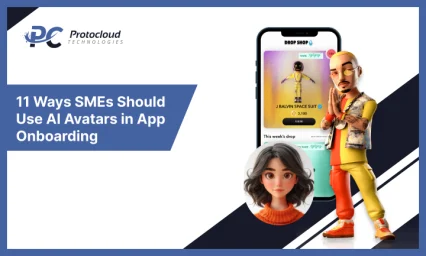


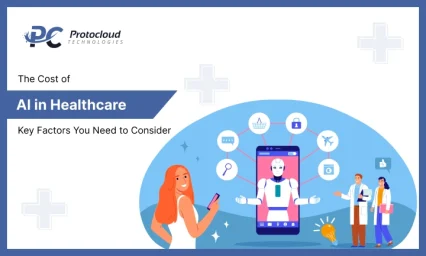
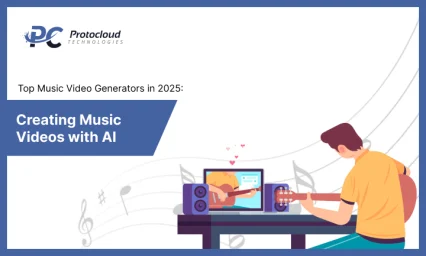
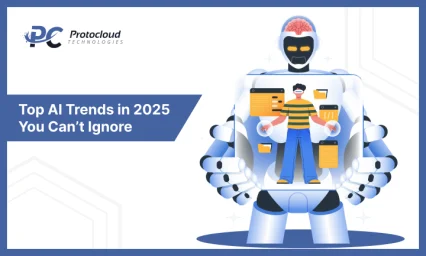
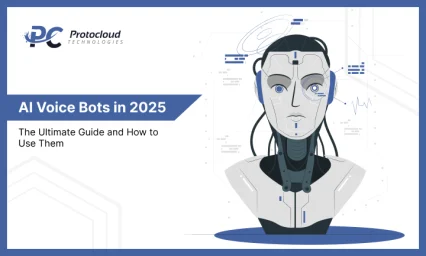
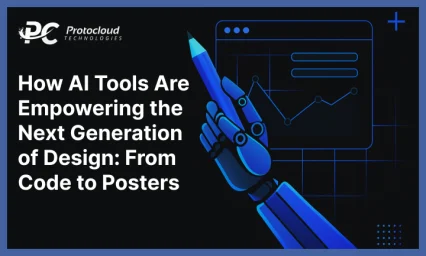
Leave a Reply